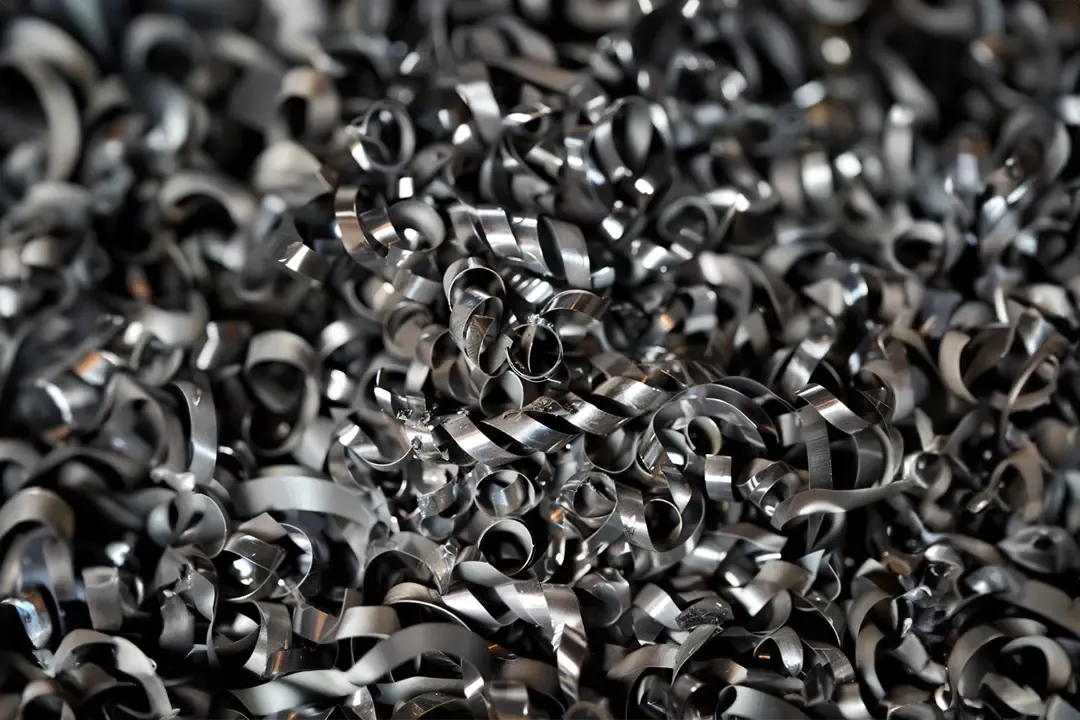
Chips during tapping: Problems and solutions
Chips are an unavoidable by-product of tapping and other machining processes. If you have ever cut a thread yourself, you can probably tell us a thing or two about it. But you can't do without them. After all, material is removed during machining and this does not disappear into thin air, but has to go somewhere. Good chip management is essential to ensure that it causes as little disruption as possible and does not cause any damage.
As always, it helps to understand the causes of a problem in order to find a good solution. What factors influence the chip during tapping, what negative effects does it have and how can you avoid chip problems? We explain all this in this blog post.
A distinction can be made between these chip types
Of course, it would be easiest if chip formation during tapping could be completely avoided. However, as this is not possible, dealing with chip problems is all about finding the least of the evils. In this context, it makes sense to distinguish good chips from bad chips.
Chips in tapping and other machining processes occur in many different forms. These are differentiated according to how long a continuous piece of chip is and whether and to what extent it forms a spiral. Very long and/or irregularly shaped chips such as ribbon chips or tangled chips are unfavorable for tapping.
Long, cylindrical spiral chips that are tightly rolled and ensure a better surface finish are classified as usable. Very short spiral chips or crumbling chips, which are particularly easy to remove, are also useful. However, the best chip shape lies between these two ends of the scale. Short cylindrical spiral chip pieces, spiral helical chips and spiral chip pieces are considered optimal for preventing chip problems.
The usability of chips in tapping is measured by the chip space number, which indicates the ratio between chip volume and material volume. The concept can be illustrated well using an air snake. Before use, it fits easily in the palm of one hand, but when cleaning up after the carnival party, you need both hands because the space required is multiplied after blowing. So the smaller the chip space, the easier it is to handle the chip.
Various factors determine chip formation
Now we know which chip shape is good, but not yet how to get there. The chip that ultimately occurs during tapping depends on a number of factors.
An important criterion for chip formation during tapping is the cutting values, i.e. the interaction of values such as cutting speed and feed rate. In summary, the following can be said: The chip shape deteriorates with increasing cutting speed and chip breaking improves with increasing feed rate, but at the expense of surface quality.
The geometry of the tool is also decisive when dealing with chips during tapping. The rake angle on the cutting edges of the tap is particularly relevant. Its size determines the length and shape of the chips.
The third decisive factor is the material from which the workpiece is made. The machinability determines the shape and form of the chip during tapping. The cutting material from which the tap is machined is also decisive.
Frequent chip problems when tapping are annoying
We have not yet answered one question. What exactly are the problems caused by the chip during tapping? In most cases, chip problems are reflected in the quality of the thread produced or cause damage and reduce the service life of the tool.
If long chips accumulate during tapping and cannot be removed properly, this leaves an unclean surface on the thread. It can even lead to the dimensions of the thread not meeting expectations in the end because the thread becomes too large due to the chip build-up.
It is even more annoying if jammed chips cause the tap to break. Then not only is the tool damaged beyond repair, but the thread is usually no longer usable either.
The risk of chip problems is particularly high with blind holes. While through holes allow chips to escape easily, especially at shallow depths, blind holes end in the material and falling material can accumulate at the bottom of the hole.
How to avoid chip problems when tapping
If you want to play it safe, you can of course switch to non-cutting methods for thread production, such as thread forming or thread rolling. For domestic use, however, this is not the most sensible way to deal with chip problems when tapping.
There is no foolproof solution for eliminating chip problems in tapping once and for all. The influencing factors are too varied and cutting cases too different. However, by choosing your tool wisely, you can ensure that the risk associated with chips when tapping is kept as low as possible. Your tap should always be suitable for the material you are working with. Many materials, such as stainless steel or aluminum, are difficult to machine with tools for universal use. In addition to the material, the geometry of the tap must of course also be suitable for the application. For blind holes, for example, the correct groove shape is crucial so that the chip is conveyed out of the hole against the cutting direction during tapping and cannot jam.
The settings for cutting speed and feed rate are then crucial to ensure that the carefully selected tool can do its job properly. You should also make sure to use the correct cooling lubricant, as this also facilitates the removal of chips during tapping.
At BAER, we make it as easy as possible for you to avoid cutting problems. In our online store, you will not only find high-quality tools for every cutting application, but also precise information on the required cutting speed for all materials. And if you have any questions, please contact our customer service team at any time!
